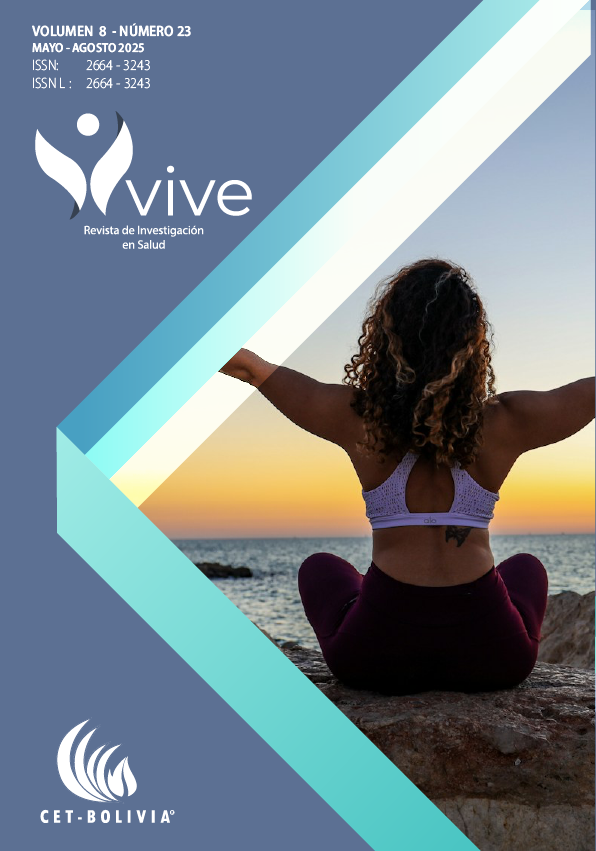Anomalía de Ebstein: a propósito de un caso
Ebstein anomaly: a case reportContenido principal del artículo
La anomalía de Ebstein es un defecto congénito complejo e infrecuente que incluye malformaciones morfofisiológicas de la válvula tricúspide y del ventrículo derecho, ocurre en 1 de cada 200 000 nacidos vivos y representa <1% de las cardiopatías congénitas, con frecuencia se relaciona con otros defectos como: tabique interauricular, estenosis o atresia pulmonar, comunicación interventricular, coartación aórtica y la tetralogía de Fallot. Paciente de 49 años con antecedente de anomalía de Ebstein e insuficiencia cardíaca congestiva refiere desde edad escolar presentar disnea de grandes esfuerzos, sin otra sintomatología acompañante, hace 15 días aproximadamente el cuadro se exacerba a disnea de medianos esfuerzos que se acompaña de palpitaciones, dolor torácico atípico y astenia, motivo por el cual se decide su ingreso. Ecocardiograma evidenció válvula tricúspide de implantación baja en el ventrículo derecho. Electrocardiograma reportó fibrilación auricular, bloqueo completo de rama derecha, trastorno de la repolarización ventricular. Paciente evoluciona favorablemente, no obstante, dadas las complicaciones propias de anomalía de Ebstein se decide tratamiento farmacológico expectante y paliativo. La anomalía de Ebstein representa una malformación cardíaca con una tasa de incidencia baja. La ecocardiografía se considera la modalidad preferida para detectar la patología debido a su capacidad para proporcionar una confirmación visual de la anomalía de la válvula tricúspide.
Ebstein's anomaly is a complex and rare congenital defect that includes morphophysiological malformations of the tricuspid valve and right ventricle. It occurs in 1 in 200,000 live births and represents <1% of congenital heart diseases. It is frequently associated with other defects such as: interatrial septum, pulmonary stenosis or atresia, ventricular septal defect, aortic coarctation, and tetralogy of Fallot. A 49-year-old patient with a history of Ebstein's anomaly and congestive heart failure reports dyspnea on heavy exertion since school age, without other accompanying symptoms. Approximately 15 days ago, the condition worsened to dyspnea on moderate exertion accompanied by palpitations, atypical chest pain, and asthenia, which is why the decision was made to admit him. An echocardiogram showed a low-set tricuspid valve in the right ventricle. An electrocardiogram revealed atrial fibrillation, complete right bundle branch block, and ventricular repolarization disorder. The patient is progressing favorably; however, given the complications associated with Ebstein's anomaly, expectant and palliative pharmacological treatment was decided upon. Ebstein's anomaly represents a cardiac malformation with a low incidence rate. Echocardiography is considered the preferred modality for detecting the disease due to its ability to provide visual confirmation of tricuspid valve abnormality.
Descargas
Detalles del artículo
Inzunza-Cervantes G, Herrera-Gavilanes J, Espinoza-Escobar G, Zazueta-Armenta V, Cortés-García V, Ornelas-Aguirre J. [Ebstein’s anomaly with ventricular preexcitation in an adult patient]. Rev Medica Inst Mex Seguro Soc. 2022;60(4):466-73. https://pubmed.ncbi.nlm.nih.gov/35819304/
Alves B, Lima S, Rasla S. Ebstein’s Anomaly of the Tricuspid Valve. R I Med J 2013. 2024;107(5):21-4. https://pubmed.ncbi.nlm.nih.gov/38687264/
Umar H, Zagga U, Akintomide F, Maiyaki A, Umar M, Dankiri N, et al. Ebstein’s Anomaly: An Unanticipated Differential Diagnosis of Egg-on-Stick Appearance and the Diagnostic Dilemma. Am J Case Rep. 2021; 22. https://www.amjcaserep.com/abstract/index/idArt/924810
Braga De Souza E, Ramirez Vallejo E. Reporte de caso clínico: Cardiopatía congénita cianótica con Anomalía de Ebstein, tipo B de Carpentier. Cienc E Investig Medico Estud Latinoam. 2021;26(2). https://www.cimel.felsocem.net/index.php/CIMEL/article/view/1459
Singh D, Hussain K, Horenstein M, Mahajan K. Ebstein Anomaly and Malformation. En: StatPearls. Treasure Island (FL): StatPearls Publishing; 2024. http://www.ncbi.nlm.nih.gov/books/NBK534824/
Nartowicz S, Janus M, Ciep?ucha A, Pyda M, Lesiak M, Trojnarska O. Ebstein anomaly with severe tricuspid valve regurgitation: An unusual case of an 84-year natural course. Pol Heart J. 2024;82(3):343-4. https://pubmed.ncbi.nlm.nih.gov/37997836/
Bautista-Vargas W. Anomalía de Ebstein y aneurisma del seno coronario. Rev Colomb Cardiol. 2022;28(2):6367. https://n9.cl/2a27ke
Bessière F, Waldmann V, Combes N, Metton O, Dib N, Mondésert B, et al. Ventricular Arrhythmias in Adults With Congenital Heart Disease, Part II. J Am Coll Cardiol. septiembre de 2023;82(11):1121-30. https://pubmed.ncbi.nlm.nih.gov/37673513/
Yu S, Yang K, Chen X, Lu M, Zhao K, Yang S, et al. Cardiac remodeling after tricuspid valve repair in Ebstein’s anomaly: a magnetic resonance study. Eur Radiol. 2022;33(3):2052-61. https://pubmed.ncbi.nlm.nih.gov/36284004/
Pasqualin G, Boccellino A, Chessa M, Ciconte G, Marcolin C, Micaglio E, et al. Ebstein’s anomaly in children and adults: multidisciplinary insights into imaging and therapy. Heart. 2024;110(4):235-44. https://pubmed.ncbi.nlm.nih.gov/37487694/
Vaikunth S, Lui G. Heart failure with reduced and preserved ejection fraction in adult congenital heart disease. Heart Fail Rev. 2020;25(4):569-81. https://pubmed.ncbi.nlm.nih.gov/31873841/
Buber J, Vatury O, Klempfner R, Tejman-Yarden S. The impact of tricuspid valve regurgitation severity on exercise capacity and cardiac-related hospitalisations among adults with non-operated Ebstein’s anomaly. Cardiol Young. 2019;29(6):800-7. https://pubmed.ncbi.nlm.nih.gov/31159904/
Pérez?Riera A, Barbosa?Barros R, Daminello?Raimundo R, De Abreu L, Nikus K. Electro?vectorcardiographic and electrophysiological aspects of Ebstein’s anomaly. Ann Noninvasive Electrocardiol. 2019;24(3):e12590. https://www.ncbi.nlm.nih.gov/pmc/articles/PMC6931749/
Nguyen V, Nguyen X, Pham V, Pham L. Successful Radiofrequency Ablation of the Right Lateral Accessory Pathway with Modified Carpentier Reconstruction Surgery in a Patient with Ebstein Anomaly Concomitant of Secundum Atrial Septal Defect, Atrial Fibrillation, and Wolff–Parkinson–White Syndrome. Nakajima H, editor. Case Rep Vasc Med. 2022; 2022:1-6. https://www.ncbi.nlm.nih.gov/pmc/articles/PMC9001140/
Sainathan S, Silva D, Silva P. Ebstein’s anomaly: contemporary management strategies. J Thorac Dis. marzo de 2020;12(3):1161-73. https://pubmed.ncbi.nlm.nih.gov/32274197/
Chambergo-Michilot D, Espinoza-Gutiérrez G, Gómez J, Tenorio-Quispe A. Válvula tricúspide displásica (Ebstein-like). Rev Colomb Cardiol. 2020;27(4):303-6. http://www.scielo.org.co/scielo.php?script=sci_arttext&pid=S0120-56332020000400303
Holst K, Connolly H, Dearani J. Ebstein’s Anomaly. Methodist DeBakey Cardiovasc J. 2019;15(2):138. https://pubmed.ncbi.nlm.nih.gov/31384377/
Pacheco J, Torres I, Serrano W. Adulto con anomalía de ebstein. Rev Fac Cienc Médicas Univ Cuenca. 2020;38(2). https://publicaciones.ucuenca.edu.ec/ojs/index.php/medicina/article/view/3110
Cepeda-Rodrigo J, Comín-Colet J, García-Quintana A, Sánchez M, Zamorano J, González-Juanatey J. Abordaje terapéutico del paciente con insuficiencia cardiaca y fracción de eyección reducida. Papel del vericiguat. Rev Esp Cardiol Supl. 2022;22:23-9. https://www.revespcardiol.org/es-abordaje-terapeutico-del-paciente-con-articulo-S1131358722000048
González-Juanatey J, Anguita-Sánchez M, Bayes-Genís A, Comín-Colet J, García-Quintana A, Recio-Mayoral A, et al. Vericiguat en insuficiencia cardíaca: de la evidencia científica a la práctica clínica. Rev Clínica Esp. 2022;222(6):359-69. https://www.sciencedirect.com/science/article/pii/S0014256522000030

